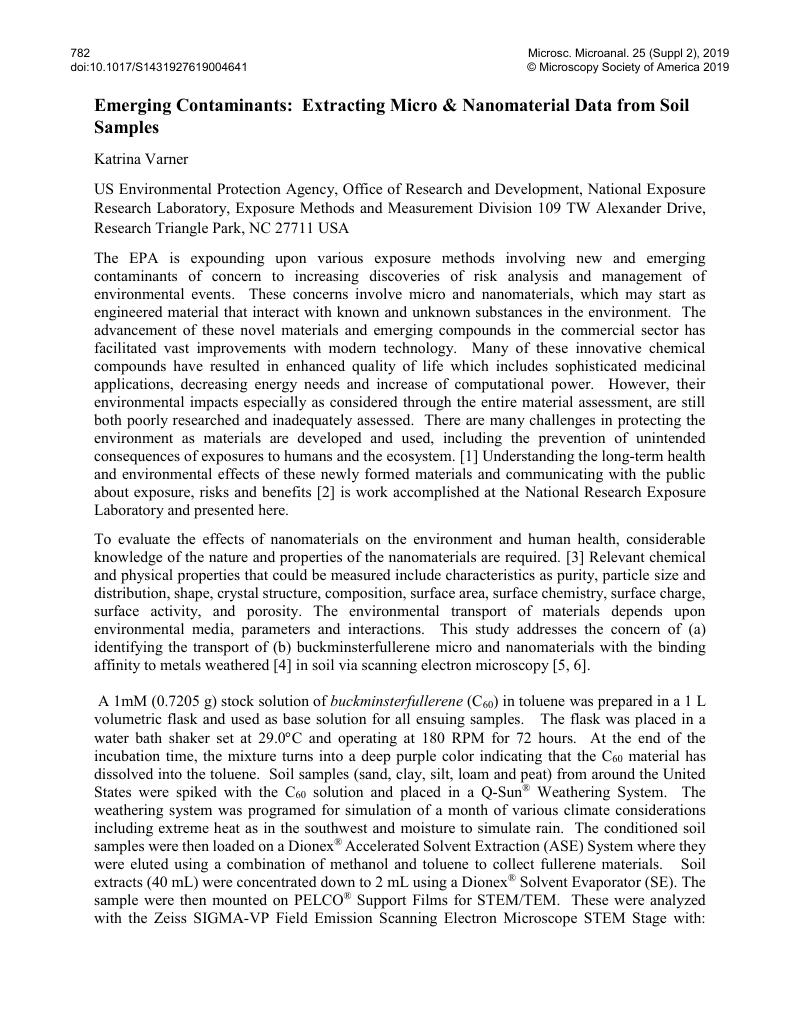No CrossRef data available.
Article contents
Emerging Contaminants: Extracting Micro & Nanomaterial Data from Soil Samples
Published online by Cambridge University Press: 05 August 2019
Abstract
An abstract is not available for this content so a preview has been provided. As you have access to this content, a full PDF is available via the ‘Save PDF’ action button.

- Type
- Microscopy and Microanalysis for Real-World Problem Solving
- Information
- Copyright
- Copyright © Microscopy Society of America 2019
References
[1]Wang, Junfeng; et al. “Observation of Fullerene Soot in Eastern China,” Environmental Science and Technology, Volume 3, Pages 121-126, March 4, 2016.Google Scholar
[2]Turley, Andrew. “OECD Conclusions About Nanomaterials and Test Guidelines Disputed,” Chemical Watch, Global Risk and Regulation News, 5 January 2017Google Scholar
[3]Batista, C.A.S.; Larson, R.G.; and Kotov, N.A. “Nonadditivity of Nanoparticle Interactions,” Science, Volume 350, Page 176, 2015.Google Scholar
[4]Wohlleben, Wendel; et al. “NanoRelease: Pilot Interlaboratory Comparison of a Weathering Protocol Applied to Resilient and Labile Polymers with and without Embedded Carbon Nanotubes,” Carbon, Volume 113, Pages 346-360, March 2017Google Scholar
[5]Goldstein, Joseph I.; et al. Scanning Electron Microscopy and X-ray Microanalysis, Springer, 2003Google Scholar
[6]Kiessling, F.; Mertens, M.E.; Grimm, J; and Lammers, T. “Nanoparticles for Imaging: Top or Flop?” Radiology, Volume 273 (1), Pages 10-28.Google Scholar
[7]Acknowledgements: The author thanks the many EPA students, Jeremy Hilgar, Darlene Usi, Shane Maheffey, and Carrie Garrison, who have worked on this project.Google Scholar


